#enterprise was early 2000s
Explore tagged Tumblr posts
Text
dr Phlox talking about his poly marriages and children so cool, good to hear his wives and their husbands have each other while he's away
#very funny how they managed to create such a complicated polycule and still keep is somewhat streight#but thats early 2000's for you#still in my headcanon Denobulan relationships are mostly queer in our current use of the word#dr phlox#star trek enterprise
12 notes
·
View notes
Text
Man y'all weren't kidding, Enterprise is truly fucking terrible.
#this show is so unnecessarily transphobic#like even for the early 2000s it's going out of it's way#and boy howdy does it love to fully ignore it's minority characters#i want to punch Trip in the face#He is so terrible and there is no reason he should be getting this much screen time#What a real fucking piece of shit#And don't even get me started on Malcolm#What a little sleezy fucking british ponce#this show doesn't deserve an ounce of the production value it was made with#star trek Enterprise
15 notes
·
View notes
Text
The cemetery where Evanescence did a photoshoot for Origin at is the Mount Holly Cemetery in Little Rock, Arkansas.
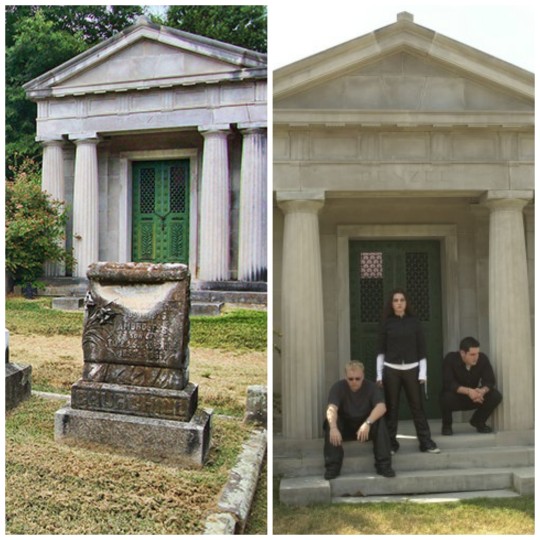

#evanescence#amy lee#ben moody#david hodges#bigwig enterprises#nu metal#2000s#early 2000s#2000s emo#2000s nostalgia#goth#oldschool#2000#origin photoshoot#origin era#origin#2000s music#nostalgia#nostalgic#little rock#arkansas#cemetery#cemetary#photoshoot#rare photoshoot#rare photos#gravestone#graveyard#location
37 notes
·
View notes
Text
#awww poor trip always has the alien ladies making advances and impregnating him#enterprise#star trek (@impossiblepluto)
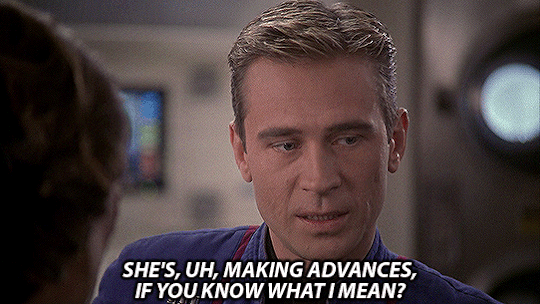

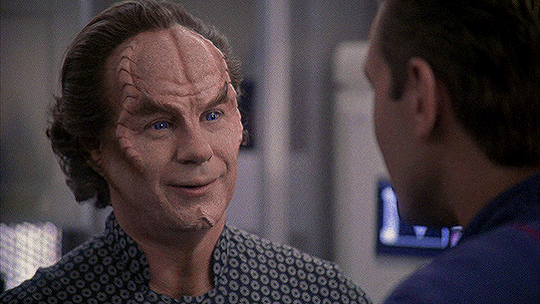
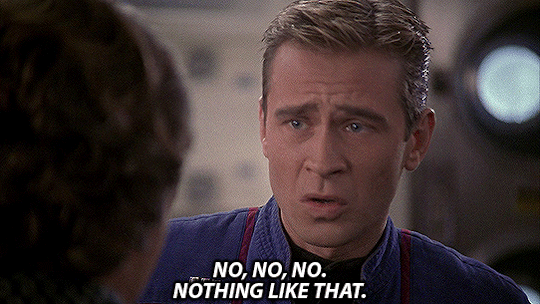



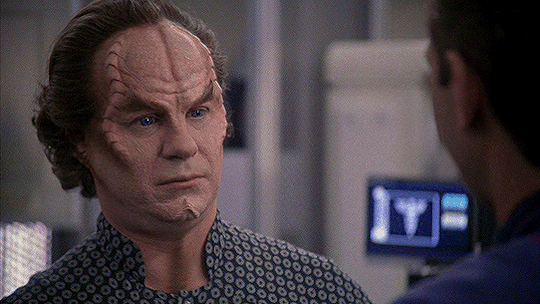
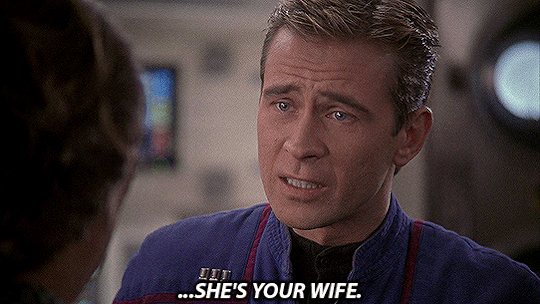

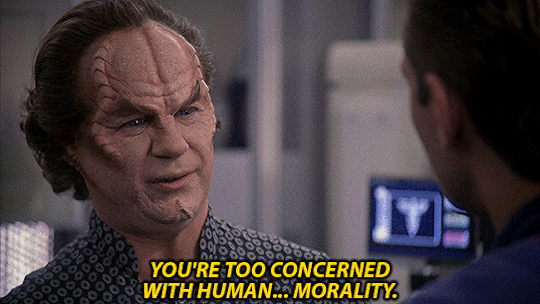

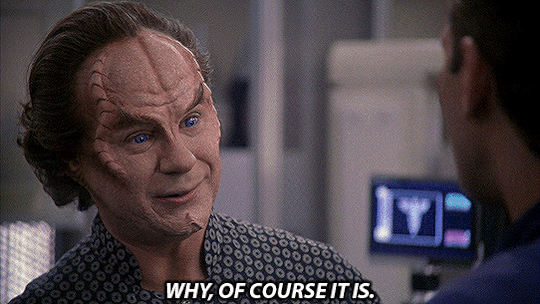
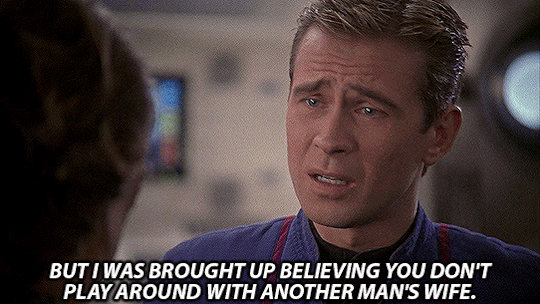



Star Trek: Enterprise // S02E14: Stigma
#lmao#you can't leave that in the tags#I DIE#Star Trek Enterprise starts off season 1 with MPREG and this was like the early 2000s#I CAN"T#Also the best title sequence ever#come at me bro
12K notes
·
View notes
Text
are we FINALLY getting a Travis episode?? he's so criminally underused im glad to see him finally get an episode
#star trek: enterprise#travis mayweather#like am I surprised that he's underused? no#I love Star Trek but it absolutely tracks that the black character barely gets any stories about him#Sisko and Jake were the exceptions to this but I mean. Sisko was the main character and Jake was his son#but Star Trek underutilizing and casting aside characters of colour in favour of white characters is a long-running thing#combine that with the general racism of the early 2000s and yeah cant say im surprised#but it still sucks cause Travis is pretty great and deserves so much better#he's a main character!! why do I barely ever see him!!#(like I know why but. still.)
1 note
·
View note
Text
"The Ayla Descent Theory" of Mary Sues
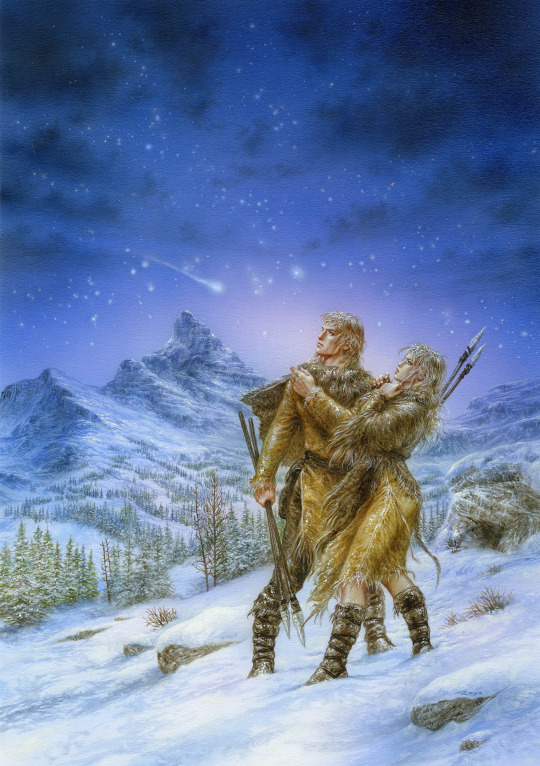
"Children of the Earth," Luis Royo.
After the success of Jean M. Auel's stone age novel Clan of the Cave Bear, there was a very lengthy trend in the publishing world of stone age adventure novels aimed at women that lasted for a decade and only really fizzled out in the early 2000s. After all, "Ayla," the name of the main character of these books, was one of the top baby names of 1987.
The target audience for these books were weird midwestern aunts....you know, the Mists of Avalon and the Mercedes Lackey/Valdemar audience. Therefore, the Clan of the Cave Bear imitators also featured things of interest to the weird aunt audience: Scotland, redhaired women with sharp tongues, commanding wolves, Ireland, Feminism, riding herds of wild horses bareback in scenic locations, Wicca, matriarchial religions, swimming with dolphins....but above all else, American Indians (a culture this audience finds interesting, as anyone who has seen the home decor of a typical weird midwestern aunt can attest), with many novels set in Ice Age America, like Children of the Dawn, Reindeer Moon and the First Americans. Decades later, this audience would form the core fandom for Game of Thrones, and the character of Khaleesi Targaryen in particular.

These books almost assuredly still have a place of honor on the book shelf of the weirdest woman at your job.
Nearly all of these imitators have two of Clan of the Cave Bear's defining traits: 1) a supremely beautiful, usually blonde athletic and statuesque main character over 5'11" who does not realize that she is so beautiful and desirable, who is good at a variety of different skills and is friendly with animals like hawks, dolphins, or horses, and 2) a love triangle between this aforementioned blond but innocent Venus and two bodybuilder muscular he-men cave hunks, one of whom is a blonde guy with long rock star hair (it was the 80s), and the other being a buff black guy with dreadlocks (or otherwise ethnic in some way).
The heroine usually picks the blonde guy in the end, but the audience usually picks the ethnic guy.
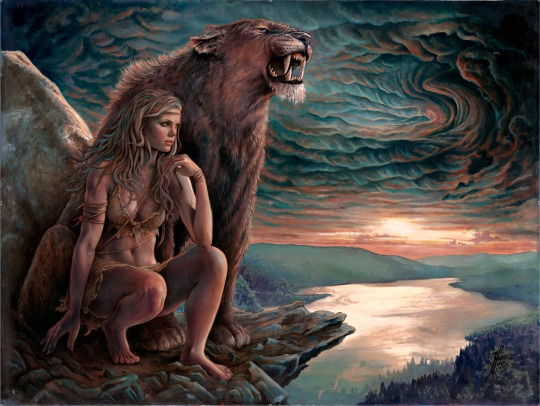
In the late 90s and early 2000s, in the broader culture of fandom, it was fashionable to dump on "Mary Sues" (indulgent wish-fulfillment author personas in fanfiction) and the people who wrote them. Accusations of creating a Mary Sue approached a kind of hysteria. Even at the time, when everyone else was getting swept up in this, I thought that getting mad about aunties writing fanfiction showed a loss of perspective, and was a bit silly. Thankfully, we've benefitted from moral evolution: the consensus in fandom now is that writing aspirational characters is a harmless activity that tests a young writer's creative muscles, like the half-Vulcan pretty new ensign on the Enterprise that Kirk and Spock both fall in love with, or a new archer girl who Legolas falls in love with joining the Fellowship. This hate walked hand in hand with insecurities, in the exact same way that people worried about their appearance or concerned with their weight are often cruel to fat people, and there were frequent tests if this or that character in your writing was a Mary Sue.

There was a running joke in this 2000s culture of anti-self insertion called the "Ayla Descent Theory of Mary Sues." The joke was that Mary Sues came into existence because Ayla, the beautiful, athletic heroine of the Clan of the Cave Bear novels, was the ancestor of their entire lineage, as the first known Mary Sue to ever exist in the historical record, described as being a statuesque blonde who did everything right and was always at the center of love triangles, and who changed human history.
According to the running joke, Mary Sues everywhere were descended from Ayla from Clan of the Cave Bear, and she was the first to exist, and Ayla was the explanation of where all the Enterprise's new ensigns main characters fall in love with come from.
481 notes
·
View notes
Text
A thought on a queer Star Trek timeline
Watching Star Trek from the original series to modern times is to fast forward through the evolution of queer rights through the 20th and early 21st century.
In the original series queerness must be imagined in the close relationship between Kirk and Spock. We can only see ourselves in what we hope and dream about for the future. We get Amok Time.
In the 80's queer people start to materialize in the background. TNG takes tentative steps towards telling our stories, still cloaked in the allegory. We get Outcast.
In the 90's Ds9 gives us Rejoined. Still cloaked in allegory, but the lines get sharper, the mist starts to lift. A character has a monologue about how two people that love each other should be able to be together. Hidden winks has turned into words.
Voyager, while a good show in other respects, does not give us a single crumb of queerness. Aside from the relationships we ourselves imagine.
In the 2000's we are on the cusp of actually having queer people on screen. Enterprise tries to tell stories of gender (Cogenitor) and the AIDS crisis (Stigma), two episodes that are still filtered through a limited understanding of both. When Enterprise ends in 2005 and this Star Trek era ends with it, queer representation in film and tv is still scarce.
The AOS era instead is where queer people, for the first time, stepped out of subtext. Sulu is married to a man - a nod to George Takei, the original series actor. Star Trek Beyond comes out in 2016, the year after same sex marriage is legalized in the US.
It isn't until 2017 that a Star Trek show officially, without subtext or allegory, gets queer characters, when Paul Stamets and Hugh Culber are married on Discovery. Discovery also adds further queer characters down the line, finally saying that yes - queer humans do exist in the future.
I know you all will have opinions on what is queer or not. But when tracking the evolution of queer representation it's important to separate subtext from text and to separate when something is allegoric verses not.
I interpret Jadzia Dax as queer - but she is not human. She is an alien wrapped inside a gender non confirming shroud of gray areas. That is the strength of her character - that it allows the writers to explore themes that otherwise would have been taboo. But the fact that they could only pursue queer storylines with non human characters tells you something about the times.
it really feels like Star Trek was late to the party with queer representation. I think there's multiple reasons for that. One is that when Enterprise was created, it still carried the legacy of shows created in the 80's and 90's. Enterprise itself is also literally a prequel - there seemed to be little desire to be bold and innovative.
Timing is I think the main reason why Star Trek trailed behind. Between Enterprise ending in 2005 and Star Trek Discovery starting in 2017 there's a whole era of representation. If Enterprise had dared make an actual queer character, like Malcolm Reed, it would have been just ahead of the wave of representation that started popping up in the late 00's - but instead it closed on a similar note as DS9 did 10 years earlier.
Feel free to add your favorite queer episodes. There are some "official" queer episodes - but there's a bunch more that meant a lot for us as queer people, for one reason or another.
#Apparently I had a lot to say today#queer trek#Let Reed be gay 2024#I say 'a thought' like this isn't an essay
116 notes
·
View notes
Text
People responding in the tags with "but it's all gay!" clearly you've never seen an episode of Enterprise
Younger sister: I want to watch Star Trek, where should I start?
Me: Well that depends on what's most important to you. Do you want to watch a show that's good, a show that makes sense, or a show that's gay?
Younger sister: Oh, definitely gay
Our mom, who was not at all involved in the rest of the conversation, yelling from the kitchen: You better start with the original series then!
#even their mpreg was straight#like come on#I don't think Enterprise is as bad as people make it out to be#but its chalk full of early 2000s heterosexuality
288 notes
·
View notes
Text
Here's a refined breakdown of how I envision Stephanie Brown's style, a character whose perception is largely shaped by the male gaze;
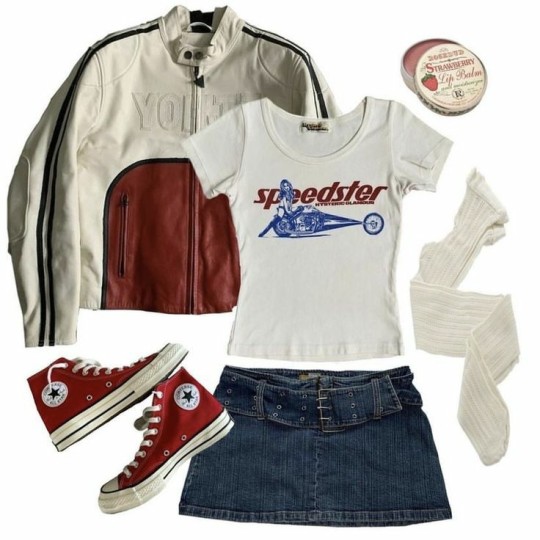
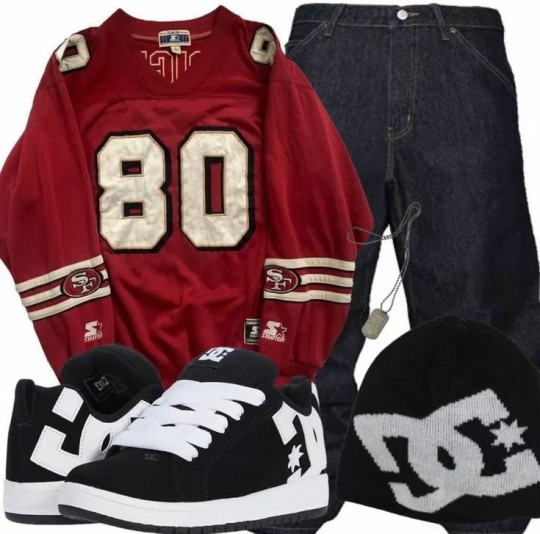
While she's comfortable wearing feminine attire, her ultimate aesthetic leans towards more of a Adam Sandler-esque vibe. Her fashion sense, similar to Duke's in many ways, differs significantly from Tim and Bruce's habit of quiet luxury. Her gamine face and all American girl look creates an interesting dichotomy with the way she dresses. There's also a notable juxtaposition between how she navigates high society in comparison to Jason. Whereas the latter used to strive towards acceptance within Bruce's elite circle, Stephanie– and sometimes even Duke, when he feels like being a troublemaker– seeks rejection. She wears oversized men suits to black tie events to emphasize her different background. She leans more into it then– if only to make a point.
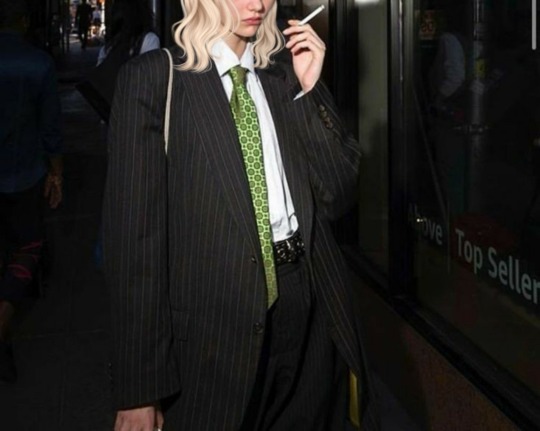
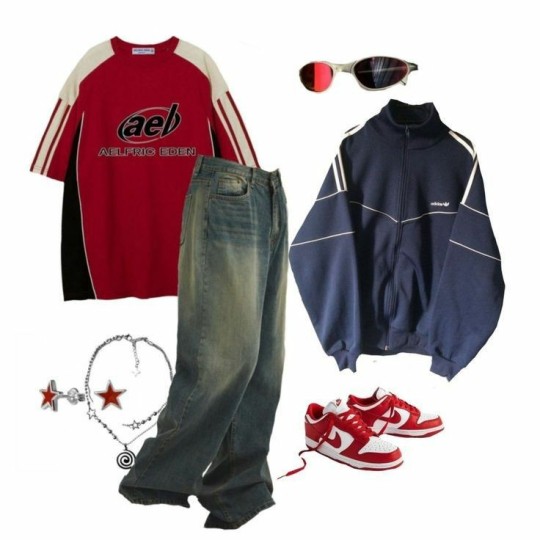
To touch back onto my understanding of the class dynamics at play within the Wayne family and how it reflects back on their personal style , I think there are five key-points to talk about– Upbringing, class, gender, race and generation.
Tim, Bruce, and Damian fall into a similar category, having been raised as wealthy boys in a racially homogeneous environment with privileged access to private education. Tim possesses a deeper awareness of his privileged worldview compared to Damian, who is more detached from poverty. Dick occupies a unique position due to his early adoption into the affluent world and his background as the son of performers, which cultivated his charm and adaptability. He seamlessly integrates into high society, drawing from his upbringing. Stephanie, Cassandra, Jason, and Duke, however, have experienced more time in lower-class environments than in financial stability, forming their own distinct circle. They share a mutual understanding rooted in shared experiences, vernacular accents, inside jokes, and nuanced awareness of class dynamics and microaggressions, which sometimes excludes the other group.
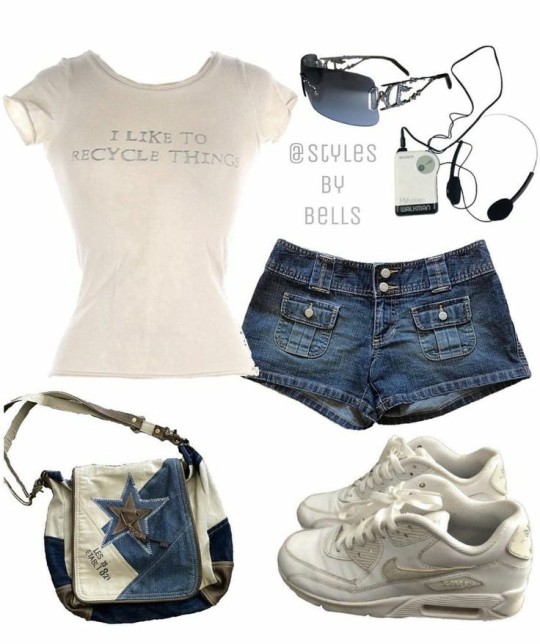
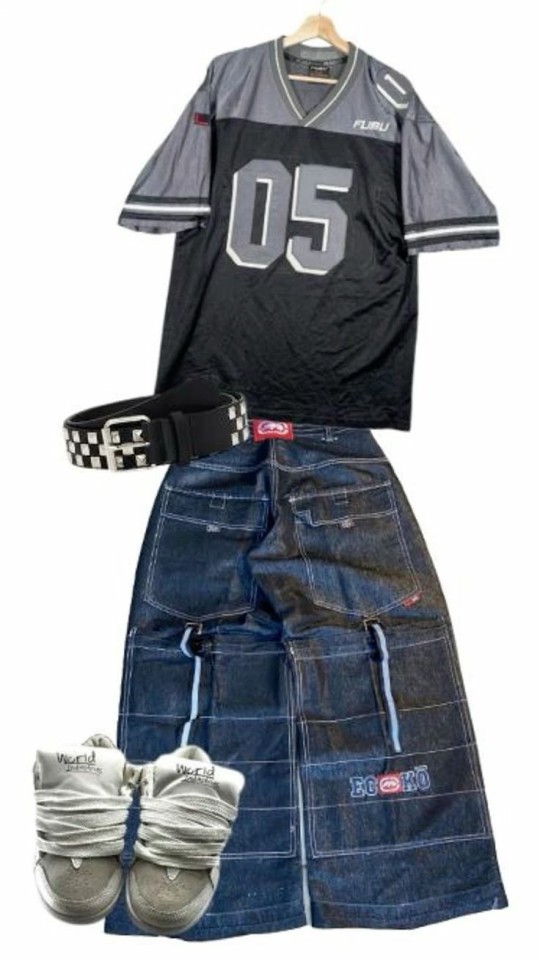
When Tim adopts a more casual, Gen-Z skater-boy persona outside of Wayne Enterprises' strict business casual environment, the second group sometimes call him a poser due to the African American roots of the skater style, which emerged in opposition to everything Tim represents– is. While they may be perceived as the "cool kids" within the house– and at school–, they are more protective of one another than malicious towards others, guarding their identity and personal struggles fiercely as an act of revendication.


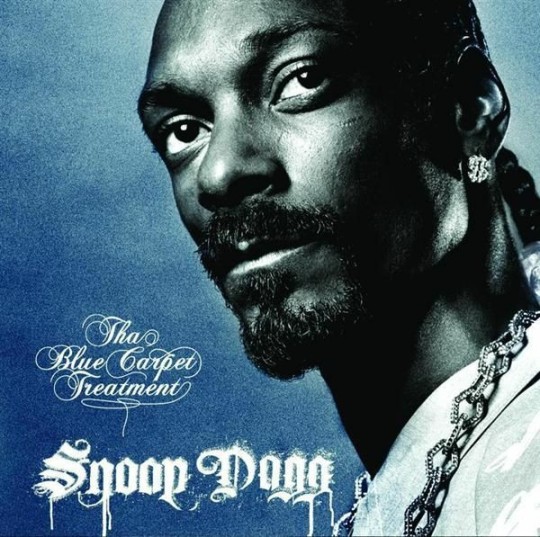
She mainly listens to 90's and early 2000's rap music and blasts "Poor Lil rich" by 50 cent whenever she has a fight with Bruce or Tim.
#kinda ooc but my version is better#Fuck canon#listen to me#stephanie brown#duke thomas#Steph and Duke are platonic soulmates#batman comics#batfam#jason todd#batman#signal#tim drake#dick grayson#damian wayne
131 notes
·
View notes
Note
honestly surprised to see you sharing stuff about indigenous spiritual knowledge
im now an immigrant to turtle island, so i think its natural to be curious about the intellectual landscape of the peoples that live here! im still an anti theist who doesn't make a distinction between religion and spirituality tbc, but i like studying philosophy and science and those are tied up in religion and our spiritual life and always have been. its all meaning making of the world? if i was studying science in the middle ages i'd have to also be understanding islam. so much mathematical and astronomical development happened simply to figure out in which direction to pray. and with it comes critiques of religious orthodoxy too.
from the great polymath alberuni's study of india and its science you'll find rebukes to brahmagupta for being a mathematician who doesn't have the moral courage to dispute the theology about the eclipse.
Alberuni quotes Brahmagupta's criticism of Aryabhata and his followers, in defence of the orthodox religious theory [...]
"Some people think that the eclipse is not caused by [a shadown planet and deity, Rahu's] Head. This, however, is a foolish idea, for it is he in fact who eclipses, and the generality of the inhabitants of the world say that it is the Head that eclipses. The Veda, which is the word of God from the mouth of Brahman, says that the Head eclipses. ...On the contrary. Varahamihira, Shrishena, Aryabhata and Vishnuchandra maintain that the eclipse is not caused by the Head, but by the moon and the shadow of the earth, in direct opposition to all (to the generality of men), and from the enmity against the just-mentioned dogma."
Alberuni, who is quite excited about Aryabhata's scientific theories of eclipses, then accuses Brahmagupta (a great mathematician himself) for lacking the moral courage of Aryabhata in dissenting from the established orthodoxy. He points out that, in practice, Brahmagupta too follows Aryabhata's methods in predicting the eclipses, but this does not prevent Brahmagupta from sharply criticising - from an essentially theological perspective - Aryabhata and his followers for being heretical and heterodox.
SEN, AMARTYA. “INAUGURAL ADDRESS: HISTORY AND THE ENTERPRISE OF KNOWLEDGE.” Proceedings of the Indian History Congress 61 (2000): 1–13. http://www.jstor.org/stable/44148076.
so my attitude to indigenous spirituality is on the same continuum! im very early in my study so ofc im yet to discover what constitutes heterodoxy in say, anishinaabe spiritual life or if the material conditions of genocidal violence preclude it.
26 notes
·
View notes
Text
I realized what put me off so much about Enterprise.
When I watched TNG I was like "damn if I had only seen this as a kid I could have figured out my gender stuff way earlier."
If I had seen Enterprise as a kid I would have just been pushed even deeper into the cisgender closet.
#how the fuck this show followed tng ds9 and voy i just do not understand#the early 2000s were a horrible time of regression#star trek Enterprise#star trek tng
1 note
·
View note
Text
Updated info
Extremely rare Evanescence Origin advertisement featured on Automata Magazine issue 3.0, 2001
Origin was rated #3 in their Top 10 of 2000 chart
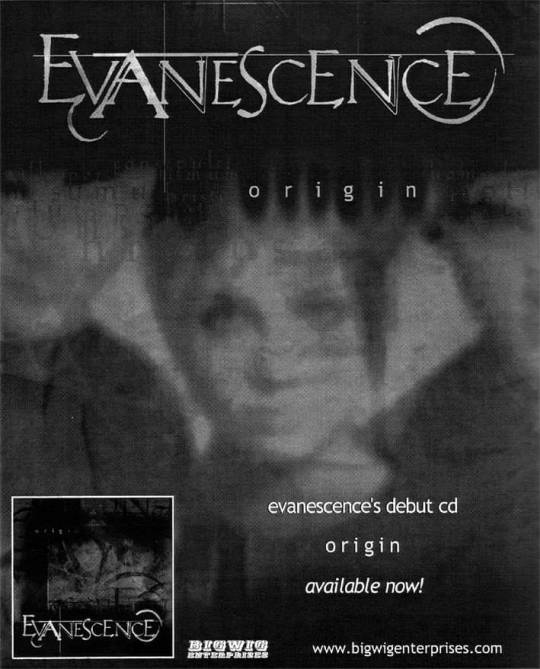
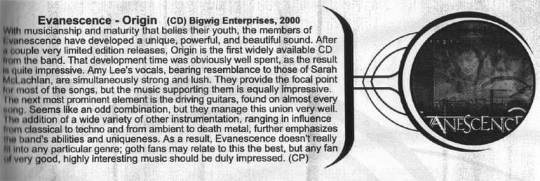
#evanescence#amy lee#ben moody#david hodges#nu metal#goth#2000s#2000s emo#early 2000s#mallgoth#symphonic metal#2000s nostalgia#origin#rare pics#rare#origin era#Bigwig Enterprises#debut era#debut cd#advertisement#original advertisement#extremely rare#super rare#bigwig enterprises#automata#automata 3.0#automata magazine#magazine ad#old magazines#2000
201 notes
·
View notes
Text


Lesson number 2:::. The Boston Saloon, which operated in Virginia City, Nevada, is the only black-owned Western saloon to be the subject of an archaeological excavation. During Virginia City’s heyday in the early 1870s, the town supported over one hundred saloons; however, the Boston Saloon is one of only four that have been excavated. Of these four, only the Boston had black ownership.
In 1863 William Brown, a free black man from Massachusetts, moved to the mining boom town of Virginia City, Nevada. The next year, he founded the Boston Saloon, a drinking house that catered primarily to fellow African Americans. Initially, the saloon lay outside of the city center, but in 1866, Brown moved his establishment to the town’s bustling business district. Located at the intersection of D and Union Streets, the saloon was called a “popular resort for many of the colored population” by the town’s newspaper, the Territorial Enterprise. The Boston Saloon operated until 1875; upon its closing, San Francisco, California’s Pacific Appeal mourned the loss of the successful black establishment.
Today, an asphalt cap behind the Bucket of Blood Saloon occupies the space where the Boston Saloon once stood. In 1997 the remnants of the old saloon were discovered and the site subsequently excavated in 2000. Artifacts unearthed during the excavation, paired with information gleaned from similar endeavors, have provided considerable information about the establishment.
Artifacts found at the site included drink bottles, tobacco pipes, clothing buttons, dress beads, remnants of gas lights, and crystal drink ware. These items paint a picture of an upscale drinking establishment, challenging common stereotypes of African-Americans. Unusually high volumes of dress beads indicate that more women either patronized or worked at the saloon than at similar establishments. In addition, analysis of animal bones found at the site found that the Boston served higher quality meat cuts than the other excavated Virginia City saloons.
With many Virginia City establishments at the mercy of fluctuations in the mining business, the nine years that the Boston Saloon operated at one location is an impressively long time. This fact, along with conclusions drawn from the items found in the archeological dig, indicates that William Brown operated a uniquely successful business. A historical marker hangs along C Street, the main road in Virginia City, near the site.
#black tumblr#black literature#black history#black excellence#black community#civil rights#racists#racism#racist#black people#black history is american history#virginia city
24 notes
·
View notes
Text
Bottlegate and Cola Wars, I Can't Take it Anymore!
A few weeks ago, I wrote a blogpost about the Viceroy rule in NASCAR, and one thing I cut from it was a brief discussion of the Cola Wars in NASCAR. This week, I'm tackling that issue, along with its sports drink offshoot: the bottle wars between Gatorade and Powerade.
So, to review from the Viceroy blog, while NASCAR banned sponsors that clashed with series sponsors, it did not ban competing sponsorships among different teams - in fact, it encouraged it. Thus, Pepsico got involved with Hendrick Motorsports quite famously, initially with a number of Jeff Gordon Pepsi cars, and more recently with Mountain Dew cars from the likes of Dale Earnhardt Jr. and Chase Elliott.
That came to an end after 2020, and come 2023, Chase Elliott would be scooped up by the competition: the Coca-Cola Family of Drivers.
Peaking in the late 90s/early 2000s, the Coke family once consisted of (circa 2003/2004) Steve Park, Dale Earnhardt Jr., Michael Waltrip, Bobby Labonte, Tony Stewart, Bill Elliott, Ricky Rudd, John Andretti, Kyle Petty, Kevin Harvick, Dale Jarrett, Elliott Sadler, Greg Biffle, Kurt Busch, and Jeff Burton.
That's the entire three-car lineup of Dale Earnhardt Inc., both JGR cars, both Petty Enterprises cars, both Yates cars, the Wood Brothers car, Kevin Harvick who succeeded the late Dale Earnhardt at RCR, and 60% of the Roush Racing lineup.
Coke wasn't fucking around.
Unfortunately, Pepsi had Jeff Gordon.
Well, they also sponsored Jeremy Mayfield with Mountain Dew at this time, plus Pepsi/Gatorade had deals with Jeff's Hendrick Motorsports teammates (most prominently Jimmie Johnsons) as well as the other two Roush drivers in the form of Matt Kenseth and Mark Martin, plus Ryan Newman of Penske, but Jeff Gordon is the most relevant one for the first part of this story.
That's because the Cola Wars in NASCAR came to a head at Daytona International Speedway on July 3rd, 2004 for the Pepsi 400.
Coca-Cola was promoting their new Coca-Cola C2 (essentially a soda halfway between Coke and Diet Coke by the sounds of it) brand, and they sponsored an armada of cars in this race:
John Andretti in the DEI #1 Chevy,
Greg Biffle (who won the 2003 Pepsi 400) in the Roush National Guard #16 Ford.
Tony Stewart in the Joe Gibbs Racing Home Depot #20 Chevy.
Ricky Rudd in the Wood Brothers #21 Ford.
Kevin Harvick in the RCR GM Goodwrench #29 Chevy.
Kurt Busch in the Roush Sharpie #97 Ford.
Bill Elliott in his self-owned #98 Dodge.
and Jeff Burton in the Roush #99 Ford.
Coke had eight bullets in the gun to steal the thunder right out from Pepsi's flagship race - in what Pepsico pointed out was a blatant marketing stunt - however, like I said...Pepsi had Jeff Gordon.
John Andretti would crash out, Greg Biffle would end up a lap down, Jeff Burton in twenty-sixth, Bill Elliott eighteenth, Ricky Rudd seventeenth, Kevin Harvick fourteenth, while Tony Stewart in fifth and Kurt Busch in fourth were closest to pulling off Coke's marketing upset.
Unfortunately, none of them could stop Jeff Gordon from winning from pole in his DuPont/Pepsi #24 for Hendrick Motorsports.
It was the biggest moment of the Cola Wars, but 2004 had another Pepsi vs. Coke battle going on at the same time: Bottlegate.
You see, despite the Viceroy rule normally stopping this kind of stuff, in 2004, NASCAR decided to have Gatorade (Pepsi) sponsor victory lane, while Powerade (Coke) bottles would be placed on the roof of the winning cars. How the hell was this allowed to happen? Well, despite the France family running both NASCAR and the International Speedway Corporation, at this time, NASCAR had a deal with Coke and ISC had a deal with Pepsi - the same people in the guise of two different companies signed deals with two rival brands. Of course this was going to cause issues.
Pepsi did not want their drivers in their victory lane photographed with bottles of a Coca-cola owned sports drink.
Thus, Bottlegate began.
Matt Kenseth, Mark Martin, Ryan Newman, Jeff Gordon, and Jimmie Johnson were all sponsored by Pepsi, thus, as soon as they got out of the car in victory lane, they would punch and/or sweep the bottles off the roof, instantly getting Coke products out of the pictures...which pissed off Coca-cola a lot.
They were paying good money just to see drivers knock over their product!
So, after the Pepsi 400, with the aforementioned embarrassment of Coca-cola, NASCAR made a rule banning drivers from punching the bottles off the cars.
Coke drivers won the next two races with Tony Stewart winning at Chicagoland and Kurt Busch winning at New Hampshire.
But then Pepsi's Jimmie Johnson won at Pocono on August 1st.
Well, instead of punching the bottles, Jimmie calmly got out of the car, received a giant cardboard Lowe's sign from someone on his crew, and placed it in front of the Powerade bottles.
I love this stuff, this is generational pettiness over here, the Coke guys and the Pepsi guys each trying to make the other brand look bad, it's great!
Unfortunately, Coke and NASCAR didn't seem to think so, because Jimmie Johnson was fined $10,000 over the sign incident.
So yeah, this was NASCAR in the 2000s, where corporate money was everywhere and there were enough sponsorships going around that the drivers, the tracks, and the series all had separate deals to have to worry about. Hell, three Roush drivers were with Coke and the other two were with Pepsi - compare that to nowadays where the vending machines at RFK Racing are from Fastenal.
How the hell am I supposed to drink a wrench?
21 notes
·
View notes
Text



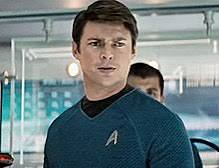
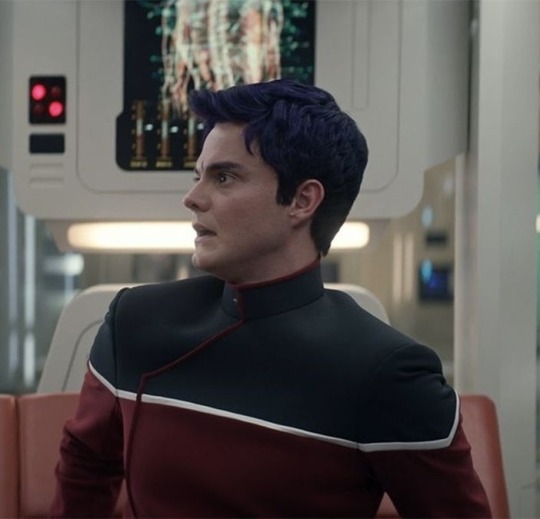
Older obscure Star Trek fanfiction
What does a TV adaption of an extremely nihilistic comic book series made in the early 2000s and a Science fiction television show of the 1960s representation of the ideal vision of the future have in common apparently, a lot of fucking actors
This is a story that has nothing to do with enterprise except for references. I’m sorry for those who were expecting Ent, but what can I say? I’m a Genz Trekkie; I can’t always stick to one audience
Warning the boy's series is a super freaking gory series, wall so is Decks, but not to the extent The Boys is. There is mentions of Disembowelment and electrocution in this story and other warnings that I cannot give you at this time because this fic is not finished you have been warned
Please don’t hesitate to PM me and give writers love and support as always enjoy
Reflected in a sunbeam By Naryix
https://archiveofourown.org/works/46413019
The ghosts of the past can be a big pain in the ass for those in the future, and there’s nothing wrong with hoping for a better tomorrow. 
#star trek#older obscure star trek fanfiction#star trek fanfiction#star trek lower decks#the boys tv#billy butcher#hugh campbell#leonard mccoy#bones mccoy#brad boimler#bradward boimler#beckett mariner#star trek 2009#star trek aos#star trek alternate original series
24 notes
·
View notes